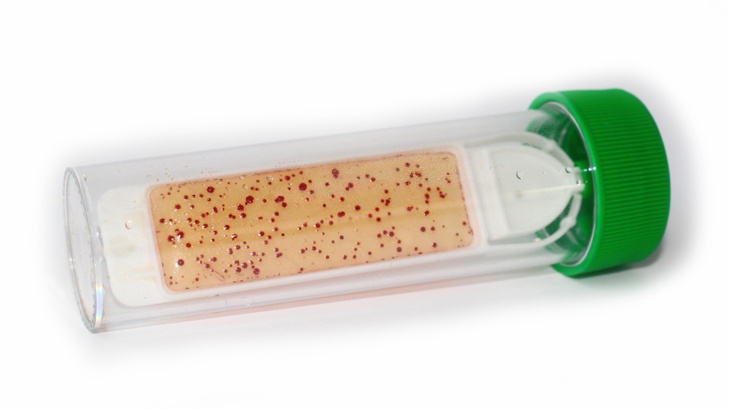Dip slides are the most common and simplest method to measure bacteria. Nevertheless, common mistakes are made every day by users in the industry that ultimately affect the process fluid.
The most common mistake is to think that all bacteria are the same. They aren't. It is therefore not possible to measure them in the same way. Here are five tips to find the best way of using dip slides in your system.#1 Try different dip slides
Not all dip slides have the same formula. This means that different dip slides can be more or less suitable for different systems. No dip slide is right for all systems.
The bacterial flora can change over time, particularly if you change fluid type. It can therefore be beneficial to make a dip slide evaluation once a year or in conjunction with changes.
#2 Try different incubation times
The instructions for most dip slides say that the results can be read after 24 to 48 hours. For many systems this is not the case. Certain systems have bacteria that require longer incubation times. They quite simply grow more slowly. It might even be the case that bacteria that grows rapidly in the system grows slowly on the dip slide as the nutrients it lives off in the system are not present on the dip slide.


The picture above shows two dip slides, 72 and 148 hours respectively after taking samples. After three days it appeared as if there were no bacteria in the system. However, when six days had gone by it was clearly visible that the system contained a large amount of bacteria.
An example of a slow-growing bacteria is mycobacteria. They can need a week or more to show up on a dip slide. If this is the most common bacteria in the system, the dip slide can be highly misleading if the results are read after just two days.
Why is this important? If the bacteria concentration is perceived to be lower than it actually is, there is a risk that the counteractions are insufficient. Then both the working environment is affected and the metalworking fluid get damaged.
#3 Evaluate incubation at different temperatures
Find the temperature where your dip slides grow fastest! Higher temperatures do not always produce faster growth (bacteria are different, right?). Get answers quickly, react quickly, save time!
#4 Include colonies that are not coloured
They have not broken down the dip slide's colouring agent, either because they can't or because they haven't done so to a sufficiently great extent. Even though they are not coloured, they are still bacteria and should be included in the overall assessment. They can sometimes be difficult to see, however, if the dip slide is angled, they can be identified as irregularities on the surface.
#5 It is not the size that counts
Note that it is the number of colonies and not the size of them that has to be evaluated. (CS)
Want to learn more about bacteria and metalworking fluids?



Comment